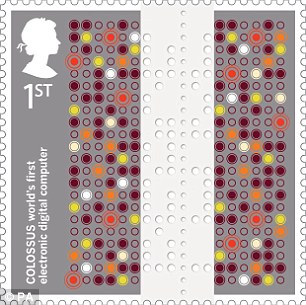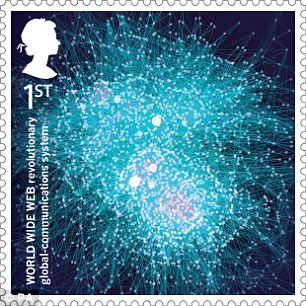
An impressive set of eight postage stamps to commemorate British inventions has just gone on sale. It’s a rather eclectic bunch which covers a number of innovations, such as the computer and the World Wide Web, but ignores older triumphs such as television, penicillin, the steam engine, railways and spotted dick. But it makes a pretty set, nonetheless.
It is appropriate that the Royal Mail should be celebrating the invention of the electronic computer. During the war it was a General Post Office engineer, Tommy Flowers, who designed and built Colossus, the world’s first electronic digital computer. He worked on it at the Post Office Research Centre at Dollis Hill in North London where it was demonstrated in November 1943. Flowers was a close associate of Alan Turing at Bletchley Park and the Mark I Colossus ran there for the first time in January 1944. Colossus has just been rebuilt at Bletchley Park by enthusiasts from the National Museum of Computing.
What is fascinating about Flowers’ invention was that its association with Bletchley Park led to its development remaining a state secret until well into the 1970s. The untold story of Bletchley’s code breaking had implications for national security well into the Cold War and all evidence was suppressed. As a result, Britain failed to get the recognition for producing the world’s first electronic digital computer. History has now been put to rights.

The invention that unleashed the computer on the masses, Tim Berners-Lee’s World Wide Web, is a perfect complement to Flowers’ Colossus and gets its own stamp. Before the web, personal computers were a rather niche product for businesses and for geeks.
Many, particularly older people, couldn’t see the point of computers and the relevance to their lives. Now, thanks to Berners-Lee, almost everyone understands the potential of the computer. And those who still can’t bring themselves to use a computer are happy to swipe away at an iPad which, of course, isn’t a computer.

The third highly relevant commemoration is the invention of fibre-optics which have been instrumental in bringing the power of the internet into the home, among many other uses. Adding to the sense of occasion are stamps noting the invention of carbon fibre, stainless steel, the bionic hand (strange choice, that) and DNA sequencing. Bringing up the rear is an invention that we all rely on day after day but seldom think about: The cat’s eye.
This is another strange one, the cat’s eye, invented in 1933 by reclusive Yorkshireman Percy Shaw of Halifax. His bright idea made him wealthy but he continued to live modestly in the same house. Percy’s sole extravagance (apart from his Rolls Royce Phantom) was to invite all his neighbours to sit around four flickering black and white televisions, all tuned to a different channel but with the sound turned down.
British eccentricity is another invention that deserves a stamp.
Stamp images courtesy of PA




